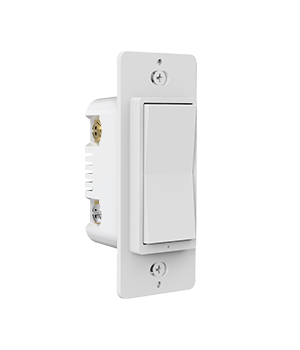Dimmer Switches: Why You Need One in Your Home
Dimmer switches are a simple yet powerful upgrade for any home. They give you complete control over your lighting, helping to create the perfect atmosphere while also saving energy. If you’re considering installing dimmer switches, this guide will walk you through everything you need to know.
What Is a Dimmer Switch?
A dimmer switch is a device that allows you to adjust the brightness of your lights. Unlike traditional light switches, which only turn lights on or off, dimmers let you set the intensity to your desired level. This flexibility enhances comfort, ambiance, and even energy efficiency.
Why Should You Use Dimmer Switches?
Switching to dimmers comes with multiple benefits. Here’s why they’re a great addition to any home:
1. Energy Savings
By reducing light intensity, dimmers decrease energy consumption. Lower brightness means your bulbs use less electricity, which translates into lower utility bills. Plus, they help extend the lifespan of your bulbs, reducing the frequency of replacements.
2. Mood and Ambiance Control
Want soft lighting for a cozy movie night? Or bright light for reading? A dimmer switch allows you to customize the lighting in any room to match your activity.
3. Increased Bulb Lifespan
Light bulbs that run at lower power tend to last longer. Since dimmers reduce the electrical load, your LED or incandescent bulbs will have a much longer lifespan.
4. Better Sleep Quality
Bright lights at night can disrupt your natural sleep cycle. Dimming your lights in the evening helps signal your body that it’s time to wind down, promoting better sleep.
Types of Dimmer Switches
Not all dimmers work the same way. Understanding the different types will help you choose the right one for your home.
1. Rotary Dimmer
This classic type features a knob that you turn to adjust brightness. It’s simple, effective, and works with most incandescent bulbs.
2. Slide Dimmer
With a sliding control, you can smoothly adjust the light level up or down. Some models include an on/off switch for added convenience.
3. Touch Dimmer
These modern dimmers use touch-sensitive technology to adjust brightness. A simple tap or press lets you change the light level instantly.
4. Smart Dimmer
Want to control your lighting with your phone or voice assistant? Smart dimmers connect to your home’s Wi-Fi, allowing remote adjustments through an app or smart speaker.
How to Choose the Right Dimmer Switch
Before buying a dimmer, consider these key factors:
1. Bulb Compatibility
Not all bulbs work with dimmers. Make sure your bulbs—whether LED, CFL, or incandescent—are dimmable before installing a dimmer switch.
2. Wiring Setup
Some dimmers require a neutral wire, while others don’t. Check your home’s wiring before purchasing a switch. If unsure, consult an electrician.
3. Single-Pole vs. Three-Way Dimmer
- Single-Pole Dimmer: Controls a light from one location.
- Three-Way Dimmer: Lets you control the same light from two different switches, perfect for hallways or large rooms.
How to Install a Dimmer Switch
Installing a dimmer switch is a straightforward DIY project. Here’s a simple step-by-step guide:
Step 1: Turn Off the Power
Before touching any wires, switch off the power at your circuit breaker.
Step 2: Remove the Old Switch
Unscrew the cover plate and take out the existing switch. Note the wiring connections before disconnecting them.
Step 3: Connect the New Dimmer
Match the wires from the dimmer switch to the wires in the electrical box. Usually, you’ll connect black wires together and attach the ground wire.
Step 4: Secure the Dimmer and Test
Carefully tuck the wires back into the wall box, screw the dimmer switch in place, and reattach the cover plate. Turn the power back on and test the dimmer.
Common Mistakes to Avoid
To ensure a smooth installation and operation, watch out for these common mistakes:
- Using non-dimmable bulbs – Always check that your bulbs are compatible with dimmer switches.
- Overloading the dimmer – Each dimmer switch has a wattage limit. Exceeding it can cause flickering or failure.
- Incorrect wiring – Misconnecting wires can prevent the dimmer from working. Double-check your connections before turning the power back on.
Final Thoughts
Dimmer switches are a fantastic way to enhance your home’s lighting. They provide energy savings, improve ambiance, and make everyday activities more comfortable. Whether you’re installing one for the first time or upgrading to a smart dimmer, the benefits are worth the effort.


